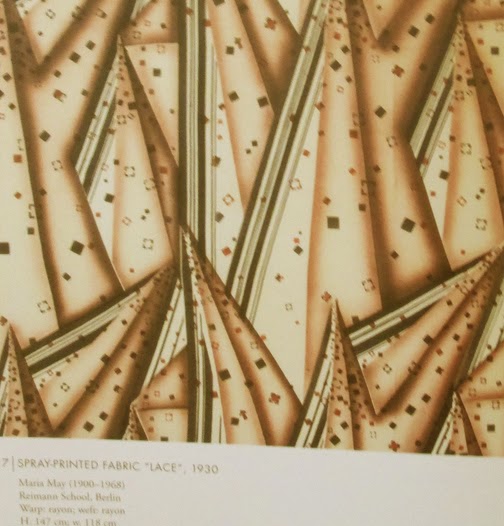"Lace," spray-painted fabric design by
Maria May (1900-1968), Berlin, Germany, 1930.
Sometimes innovation in design requires innovation in technology. In the 1920s Maria May taught at the textile workshops at the Reimann School, where she developed Spritzdecor or spray paint techniques and materials.
The picture of "Lace," above, is from European Textile Design of the 1920s, a catalog of the textile collection from that decade by curators Katharin Metz and Ingrid Mossinger of the Stadtische Kunstsammlungen Chemnitz. You can find the book in German or English.
It's difficult to find pictures of May's spray-painted designs. This catalog has the most comprehensive collection I've seen.
The cover fabric "Paris" was done in 1930
Spritzdekor was done with templates and a spray gun, what
is also called air-brush technique now.
With Otto Arpke, May did spray-painted scenes on silk for the interior of the Hindenburg zeppelin.
1943 colonial lady painting on paper
Spray-painted design took off in strange directions
You can see the influence of its shaded gradations in bark cloth
of the 1940s and '50s
even if there was no spray gun used in design or production.
The most important influence may have been in ceramics and glass
where spritzdekor was all the rage.
Martha Stewart Living magazine recently did an article about spritzdekor kitchenware.
The domestic American version was ironstone restaurant
ware by Buffalo China and other manufacturers.
See more about the Art Museum in Chemnitz:
http://www.kunstsammlungen-chemnitz.de/index.php?loc=ksc&content=sammlung_textil#9
1928 photo by Edward Steichen
Word of the day: Spritzdekor





































d!SBRQNHrbvww~~60_57.jpg)













.JPG)







.jpg)
.jpg)
0E9s37E2e7BRBp1)2zM!~~60_57.jpg)